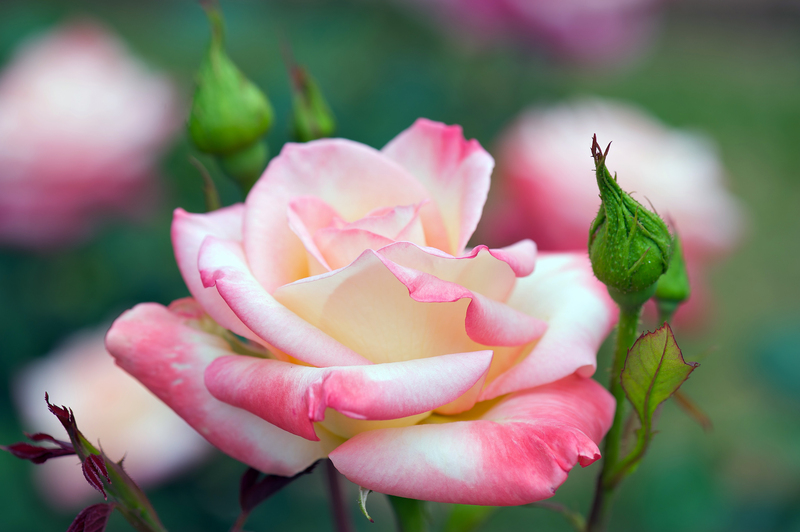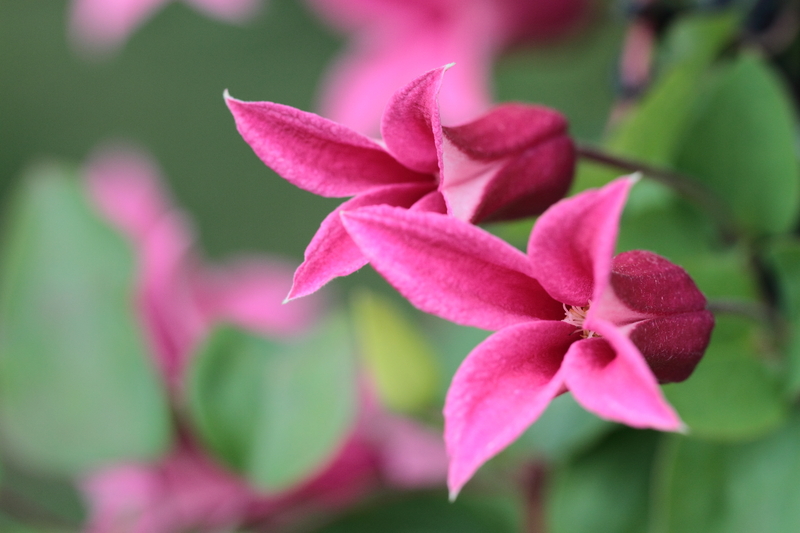Where Neglect Ends, Beauty Begins: Garden Revival Tips
Posted on 12/09/2025
Where Neglect Ends, Beauty Begins: Garden Revival Tips
If your once-vibrant garden has fallen into a state of neglect, hope is not lost. Remember the saying: Where neglect ends, beauty begins. A neglected garden is just a canvas awaiting your revival. With the right strategies, creative vision, and a touch of patience, you can transform even the weediest patch into a magical outdoor retreat. This comprehensive guide provides practical garden revival tips, tricks, and secrets to reclaim your green space and restore its beauty.
- Statistical Signs Your Garden Needs Revival
- Preparing for Garden Revival
- Essential Garden Clean-Up Steps
- Restoring Soil Health: The Foundation of Beauty
- Smart Plant Selection for Lasting Appeal
- Garden Design Tips: Creating a Visually Stunning Space
- Long-Term Maintenance for Lasting Beauty
- Creative Touches for Immediate Impact
- Frequently Asked Questions
Statistical Signs Your Garden Needs Revival
Before diving into solutions, it's essential to recognize when and why a garden requires a revival. Neglect often manifests itself in subtle--and sometimes not-so-subtle--ways, such as:
- Overgrown grass and rampant weeds choking out desirable plants
- The presence of barren patches of soil or dying turf
- Accumulated debris, fallen branches, and litter throughout the landscape
- Unsightly, wilting, or diseased plants
- Lack of color, visual interest, or wildlife visitors
- Ineffective or broken garden structures, such as fences, raised beds, or edging
Neglect can transform your once-proud sanctuary into an eyesore. Rest assured, however, that with the right garden revival tips and a bit of consistency, every garden can blossom again!
Preparing for a Successful Garden Revival
Every successful garden transformation begins with a well-thought-out plan. Here's how you can set yourself up for a seamless revival, from vision to execution:
Assess and Visualize
- Walk through your garden. Take notes or photographs to document areas needing the most attention.
- Visualize the potential. Allow yourself to dream big! Imagine lush flowerbeds, tidy paths, and inviting seating areas.
Gather Tools and Supplies
From gloves, rakes, and shovels to quality compost and mulch, gathering your materials before starting will streamline the process.
Set Realistic Goals
Reviving a neglected garden often involves multiple stages. Break large tasks into manageable goals, such as weekend projects or daily 30-minute sessions. This approach ensures that you don't feel overwhelmed and fosters a sense of accomplishment.
Essential Garden Clean-Up Steps
The first transformative act is an intensive clean-up--removing what no longer serves your garden's beauty or health.
1. Clear Out Debris and Waste
- Bag up litter, fallen branches, dead leaves, and other debris.
- Dispose of any broken plant markers, faded decor, or damaged pots.
2. Remove Weeds and Invasive Plants
- Carefully uproot weeds, ensuring removal of roots to prevent regrowth.
- Identify and remove invasive plants that may be outcompeting your preferred species.
3. Prune and Trim
- Cut away dead, diseased, or damaged branches from shrubs and trees.
- Re-shape overgrown perennials for a tidy and healthy look.
- Trim back hedges to encourage denser growth.
4. Revitalize Lawns
- Mow grass to a manageable height, removing thatch if necessary.
- Reseed bare patches to encourage lush, even coverage.
5. Clean Hardscapes
- Sweep patios and walkways, pressure-wash if needed, and clear moss from stone or brick surfaces.
- Repair loose stones, crumbling borders, or broken tiles.
Restoring Soil Health: The Foundation of Garden Beauty
Soil is the heartbeat of every thriving garden. Reviving it ensures everything you plant will flourish. Here's how to address tired, compacted, or nutrient-depleted soil:
- Test the Soil: Conduct a basic soil test to determine pH and nutrient deficiencies.
- Add Organic Matter: Enrich soil with well-rotted compost, leaf mould, or aged manure to enhance fertility.
- Loosen Compacted Earth: Use a fork or tiller to break up dense soil, improving drainage and root penetration.
- Mulch: Applying a layer of mulch helps lock in moisture, suppress weeds, and moderate temperature.
- Amend for Specific Needs: If necessary, use lime, sulfur, or specialty mixes to adjust pH for your chosen plants.
By investing in your soil, you're creating a nurturing environment where beauty can truly begin.
Smart Plant Selection for a Revived Garden
Careful plant selection is key to a sustainable and beautiful garden revival. Choose varieties that suit your climate, soil, and maintenance preferences. Here's what to consider:
Resilient Native Plants
- Opt for natives. They're better adapted to local conditions, more drought-resistant, and support wildlife.
Mix Perennials and Annuals
- Blend long-lasting perennials with vibrant annuals for a continual show of color.
Embrace Texture and Foliage
- Incorporate plants with interesting foliage--ferns, grasses, hostas--for year-round visual appeal.
Strategic Placement
- Read plant tags--place sun lovers in open spaces and shade plants beneath trees.
- Layer heights: position taller plants at the back and low growers at the front for a lush, tiered look.
Seasonal Interest
- Plant for all seasons! Combine early bulbs, summer blooms, fall foliage, and evergreen structure.
Choosing wisely reduces your workload and ensures your revived garden remains stunning with minimal intervention.
Garden Design Tips: From Neglect to Knockout
A beautifully revived garden is more than just healthy plants--it's an orchestrated tapestry of color, texture, and form. Use these design techniques to elevate your transformation efforts:
Define Spaces and Create Flow
- Add or restore pathways using gravel, brick, or stepping stones for easy navigation.
- Segment large areas with low hedges, flower borders, or natural screens for intimacy.
Introduce Focal Points
- Install arbors, sculptures, birdbaths, or water features to anchor the view.
- Create seating nooks to encourage relaxation and enjoyment.
Use Contrasts and Repetition
- Contrast bold colors and leaf shapes for drama.
- Repeat favorite plants or colors to provide unity and continuity.
Incorporate Wildlife-Friendly Features
- Add native flowering plants, shrubs, or small trees for pollinators and birds.
- Leave a pile of logs or rocks for beneficial insects.
A thoughtful design not only revives but transforms your garden, making it a destination in its own right.
Long-Term Maintenance: Sustaining Garden Beauty
The true secret to a continuously beautiful garden is consistent, proactive maintenance. Here's how to preserve your garden's newfound glory:
- Develop a schedule. Regularly weed, deadhead, and trim to prevent a return to neglect.
- Monitor plant health and treat issues such as pests or diseases early.
- Refresh mulch annually and top up compost as needed.
- Divide and share perennials every few years to rejuvenate growth and keep beds looking fresh.
- Adapt irrigation according to the seasons--use timers to conserve water in hotter months.
Remember: Just a few minutes each week is often enough to keep your revived garden flourishing and stress-free.
Creative Touches for Immediate Garden Beauty
For those desiring an instant boost to their outdoor area after tackling the basics, consider these creative, low-cost ideas:
- Add brightly painted pots or window boxes brimming with colorful flowers.
- Install solar-powered garden lights for magical twilight ambiance.
- Hang wind chimes, lanterns, or decorative garden art from trees or pergolas.
- Lay an outdoor rug in a seating area to define the space.
- Repurpose old furniture as plant stands or rustic focal points.



